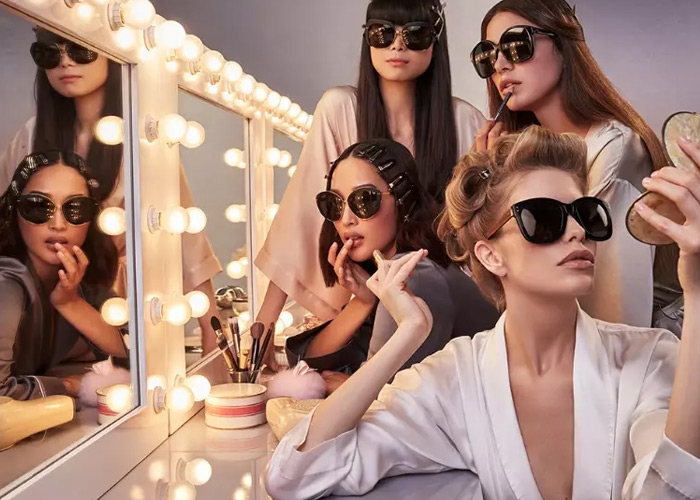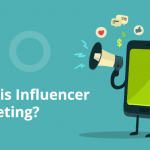The Global Fashion Influencer Marketing Market size is expected to reach $9.2 billion by 2026, rising at a market growth of 38.5% CAGR during the forecast period. In a bid to maximize their reach and capture a larger audience, fashion brands are adopting influencer marketing strategies. Also technological disruption in advertising practices and social media marketing has helped companies invest more efficiently in marketing campaigns and get a higher return on investment (ROI). Influencer marketing enables fashion brands to maximize their reach and promote their products in more innovative ways to relate to brand values.
Fashion Influencer Marketing Overview
The global fashion influencer marketing market is currently experiencing robust growth. Fashion influencer marketing refers to the promotion of fashion apparels and goods through online social media platforms. Also fashion Influencers are individuals and experts with a dedicated social following that create content related to fashion and endorse products, fashion shows, events, apparel, cosmetics and jewelry brands on their channels. Fashion influencer marketing involves delivering meaningful content to the subscribers and followers and building natural conversations around the brand and products. In other words, the service providers offer various marketing solutions, including search and discovery, campaign and influencer relationship management, analytics and reporting, workflow automation and fraud detection services.
Significant growth in the fashion industry, along with the proliferation of social media platforms across the globe, represents one of the key factors creating a positive outlook for the market. Influencer marketing enables fashion brands to effectively promote their products and reach a broader audience base using innovative marketing and campaigning strategies, such as polls, comments and direct messages to gain meaningful insights about the consumer demands. Additionally, the adoption of social search engine (SSE) and social search optimization (SSO) tools is acting as another major growth-inducing factor.
These tools assist the brands and influencers to optimize digital media content, thus maximizing their organic reach. In line with this, the integration of e-commerce with social media platforms is also contributing to the market growth. Retail-entertainment sites are using digital payment features, live streaming and shopping facilities to encourage the users to interact, comment and purchase the products being advertised in real-time. Other factors, including the increasing penetration of the internet, especially in the developing countries, along with rapid urbanization, are anticipated to drive the market further.
Also Read:
Why is your brand failing at influencer marketing ?
Fashion Influencer Marketing Market research report offers:
- Firstly market definition of the Fashion Influencer Marketing market along with the analysis of different influencing factors like drivers, restraints, and opportunities.
- Secondly extensive research on the competitive landscape of global Fashion Influencer Marketing
- Moreover identification and analysis of micro and macro factors that are and will effect on the growth of the market.
- A comprehensive list of key market players operating in the global Fashion Influencer Marketing market.
- Analysis of the different market segments such as type, size, applications, and end-users.
- It offers a descriptive analysis of demand-supply chaining in the global Fashion Influencer Marketing market.
- Statistical analysis of some significant economics facts
- Figures, charts, graphs, pictures to describe the market clearly.

Also Read:
Instagram Influencer Marketing : 6 Perfect Ideas
Key Influencer Market Segmentation:
By Fashion Type
Based on Fashion Type, the market is segmented into Beauty & Cosmetics, Jewelry & Accessories and Apparel. For instance, the cosmetics and beauty category dominated the market in 2020. This attributed to the increasing focus of beauty and cosmetics companies on using social media platforms in extracting a positive brand image and increase sales. The chosen cosmetics often influenced by personal preference type of skin and skin tone, because of this, people rely more on influencers to provide the right advice through promotional videos or makeup tutorials.
Fashion Influencer Marketing By Influencer Type
Primarily based on Influencer Kind, the market is segmented into Nano influencers, Micro influencers, Macro influencers, and Mega influencers. The Nano influencer class made a income share in 2019. This attributed to a better engagement charge and the power to attach with area of interest audiences, therefore providing manufacturers an opportunity of penetrating the market successfully than earlier than. Nano influencers even have extra packed communities with their audiences and assure much less threat of participating with pretend followers, which offers extra filtered leads for corporations.
Also Read:
The Difference Between Micro-Influencers and Macro-Influencers
By fashion Area
- North America
- United States
- Canada
- Asia Pacific
- China
- Japan
- India
- South Korea
- Australia
- Indonesia
- Others
- Europe
- Germany
- France
- United Kingdom
- Italy
- Spain
- Russia
- Others
- Latin America
- Brazil
- Mexico
- Others
- Middle East and Africa
This may be attributed to the growing use of social media platforms and high-speed web within the space. Also a big income share in 2020 is captured by Europe, which may be attributed to the presence of many main luxurious vogue manufacturers like Yves Saint Laurent SAS, Christian Dior SE, and Chanel within the specific space.
What is a fashion influencer?
A fashion influencer is a famous personality on social media, who is considered an expert in the fashion world, creating fashion content, also sharing his taste and approach of creating outfits, shopping habits, and has the power to influence the purchase behavior of others.
The fashion icons usually have a large number of followers, also who has become a loyal audience of like-minded people on social media. These snappy dressers collaborate with designers and brands, attend fashion shows. In some way, they live a beautiful life and shine brightly. Therefore,their mission is to inculcate in people a taste for style and encourage them to hone the skill of vogue.
However, people get inspiration, find out where to buy the thing they like, pick up the outfits, or simply admire their idols.
Also Read:
TikTok Fashion Trends You’ll See in 2021
How to work with fashion influencers
1. Designing The Campaign
Define the goals
Firstly, define your goals. What is it you want to achieve by working with fashion influencers? Are you looking to promote a new fashion line or product? Drive sales? Improve your brand identity?
According to this report, the top three most common goals are:
- Increase brand awareness
- Reach new audiences
- Generate sales
Your goals will have a big impact on the type of fashion influencers you’ll target, so it’s important to have a clear idea in mind of what they are. Any goal you set should be SMART, which means:
Smart objectives for Fashion Influencer Marketing
To make sure they’re measurable, start thinking about your KPIs right now. How are you going to track the performance of your influencer campaign? How will you know if you’ve met your goals?
Also, make sure you put reasonable deadlines in place. Set targets by which you intend to achieve your goals.
Set the budget
To help you get an idea of what kind of influencers would be suitable for your budget, here are some rough numbers of what each charge per post, For example:
- Micro-influencers – $100-$500
- Blog influencers – $500 – $5,000
- Social media influencers – $100 – $500,000
- Celebrities – $5,000-$1,000,000
As you can see, some of those prices vary widely and also the exact price really depends on the influencer.
You should also start thinking about your payment structure. Would you prefer to pay a flat fee or pay based on results? Many influencer campaigns work based on an affiliate model, where the influencer is paid based on the number of sales. You could also consider cost-per-click or cost-per-engagement models.
If you have a really, really small budget, you might be able to avoid paying a fee entirely. For instance, some smaller influencers may be willing to promote your product for free in exchange for a product freebie. Also you could consider sending your new product to an influencer and hope that they’re happy enough with it to review it and share it with their audience without a fee.

Also Read:
Top 10 Influencer Marketing Trends : What to Expect in the 2021
2. Finding Influencers
Here are five methods of Influencer targeting:
- Use Google – search for keywords that align with your fashion brand and scan the results for content from creators that you might want to work with.
- Look on social media – If you’re looking to work with social influencers, search for hashtags or keywords related to your industry and see which creators are influential in the space, then reach out to them.
- Spy on your competitors – look at your competitors; are they working with any influencers? If so, consider whether they might be a good match for your brand too and get in touch.
- Utilize influencer software – software like BuzzStream and Scrunch allows you to find influencers and get an insight into their statistics and also engagement metrics.
- Contact influencer agencies – there are agencies out there that work directly with a talent pool of influencers and they can help pair you up with an influencer that is a good match to your brand.
Fashion Influencer Marketing question: How to vet influencers?
Before you establish a working relationship with an influencer, you have to do your research to make sure they’re a good fit for your brand. That means performing some basic vetting procedures to separate those that are worth investing in from those that aren’t.
There are three key things to look for when you’re vetting them: reach, relevance, and resonance. In other words, how big is their audience? Do their audience and content align with your target audience? And how much trust do they command?
It’s important to remember that the size of their audience isn’t everything. For instance, Those 10,000 followers on Instagram might have only been gained through follow-for-follow tactics and won’t respond to their posts.
You want to look at their posts and try to get a sense of their engagement statistics. In other words, If they’re a social influencer, here’s a simple formula to calculate their engagement rates.
3. Managing The influencer Campaign
After you’ve made contact with your influencer, it’s time to launch your campaign. Make sure that both you and the influencer are clear about expectations and draw up a clear agreement.
Make sure you clarify things like:
- Payment structure (i.e. cost-per-click, cost-per-engagement, cost-per-post, etc.)
- Duration of time you’ll be working with each other
- The type of content you want them to share
- Disclosure agreements
- What your expected results are (make sure you both agree that they’re attainable)
- Also how often and through what channels they’ll share the promotional content
- All other necessary contractual agreements
Throughout the process, it’s important to maintain a good working relationship and communicate in the right way. Celebrity influencers are going to want to communicate in a very different way (probably through an agent) than micro-influencers, for example.







